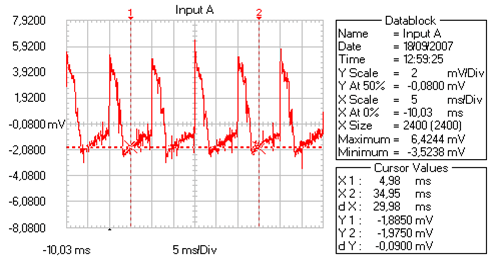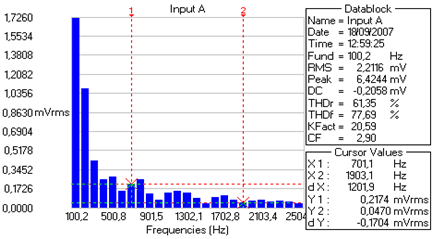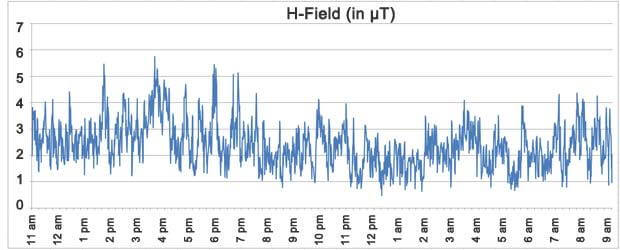1. Could electricity in the human body set off an alarm in a supermarket? This has recently happened and I have not been able to explain the triggering of the alarm on my passage near the cashier.
No, electricity in the human body cannot set off this kind of alarm.
Antitheft systems in supermarkets are most of the time made up of a smart label with a coil stuck onto the product and when it goes off, a security gate reacts to the signal sent onto.
In your case, an it has already happened to me, perhaps you have on you or in your handbag a little object of which the label have not been removed or inactivated (it can be quite tiny). The typical example is that of make-up items (lipstick, for example).
2. In your website, you give magnetic field values for domestic electrical devices, as for example electric alarm clocks or bedside lamps. Measurement distances are the most often 30 cm. Could you provide me with field values at a larger distance, e.g. 1 meter? How does magnetic field intensity decrease with the distance.
In the surroundings of an electrical cable (e.g. a cable from a high voltage powerline), the field intensity is inversely proportional to the distance (in our jargon, we use the notation 1/r). In the surroundings of domestic cables (“round-trip” conductors), the field intensity decreases with the square of the distance (1/r²) and near a coil, as for example an industrial induction furnace, with the cube of the distance (1/r³).
To answer your question, electric alarm clocks, bedside lamps and most household appliances can be considered as sources from which magnetic field intensity decreases with the square of the distance. In concrete terms, this means that when the distance doubles, field intensity decreases by a factor of 4. For example, if the magnetic field intensity is 1 microTesla at 30 cm from an electric alarm clock, the intensity will become 0.25 µT at 60 cm, 0.0625 at 120 cm, and so on.
3. I would like to know to how strong an electromagnetic field intensity I am subjected when close to an induction stove top. The resulting field must be quite high since the metal heats up so quickly. Is this field dispersed in every directions or only upwards (to the saucepan)?
Before consulting the exposure values below, you must keep in mind that the frequency range is not limited to 50 Hz: components of higher frequencies also exist (see question 3 in FAQ on calculations and technical questions).
In 2006 we performed measurements around an induction stove top with an ESM-100 Maschek measuring device, which gives components of an induction field at 50 Hz, but also in the range of 5 Hz to 400 kHz. This apparatus can therefore give various values: an overall value on the whole range of frequency (‘all’), an overall value in the lower part of the frequency range from 5 Hz to 2 kHz (‘low’) and an overall value in the higher part of the frequency range from 2 to 400 kHz (‘high’).
Below you will find the results of the measurements (µT means microTesla i.e. a millionth of Tesla).
Initial ambiant atmosphere:
- everything off, during the day : +/- 0,03 µT in the whole frequency range (a little less in ‘high’)
- everything off, in the evening : more or less 0,3 µT





